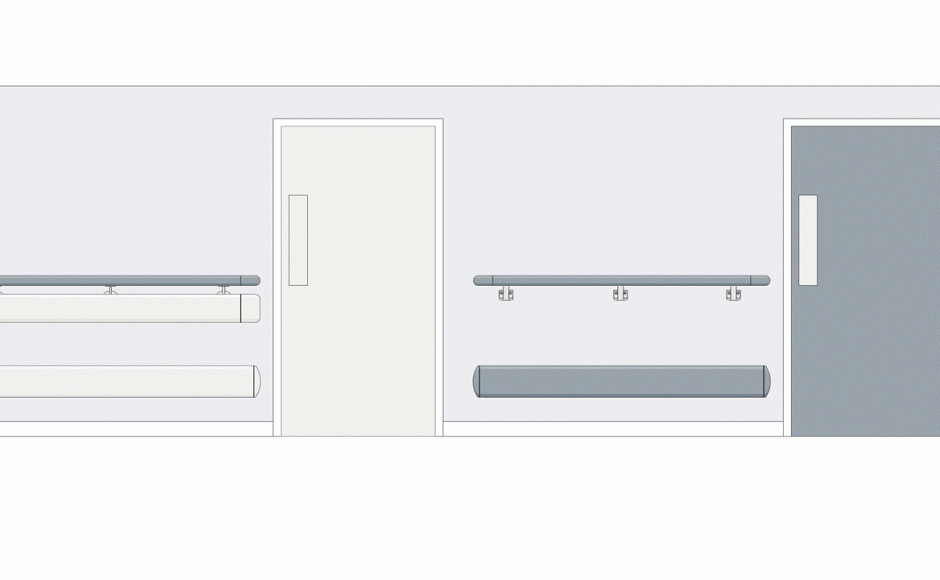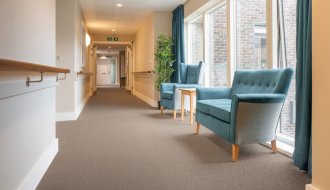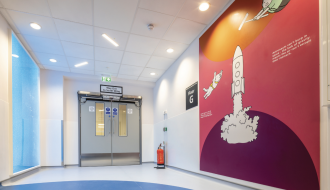A well-organized interior design of dementia housing reduces anxiety and stress for the people suffering from dementia by avoiding confusion and minimizing distractions.
This is done by providing clues of highlighting or hiding areas. For example, by having doors to staff spaces / storage rooms well hidden and areas for dining and individual rooms highlighted. The environment should also inspire to activity and interaction. Here, the handrail can be helpful if it is easily visible to provide guidance and support. The floor should have a consistent tone throughout and the wall should be in contrast to the floors. This can be good to consider when choosing wall coverings.
The key to creating or avoiding contrast is called Light Reflection Value (LRV). Light reflection is expressed as a percentage and indicates how much of the light is reflected when it hits a surface. It is measured on a scale of 0 to 100. 0 is perfectly absorbent black and 100 is perfectly reflective white. In reality, these perfect surfaces are never found, a bright white surface normally has an LRV value of 85. If you want it to be contrast, the LRV values should differ by at least 30% and should they be hidden the difference should be less than 10%.
In the picture you see an example of hiding and contrasting material. The door to the left blends into the wall so that it is "hidden" from the user and makes it less tempting for them to "explore". The handrail is more than 30% LRV from the wall colour as it is used for support and guidance. By achieving a tone contrast on the door to the right of at least 30% LRV, the door is easily recognizable and is suitable for use in personal bedrooms or common areas.
In the Gradus wall protection catalogue you will find LRV values for all our wall protection colours. You can take a closer look at this by clicking here for the catalogue and here for colour availability .



